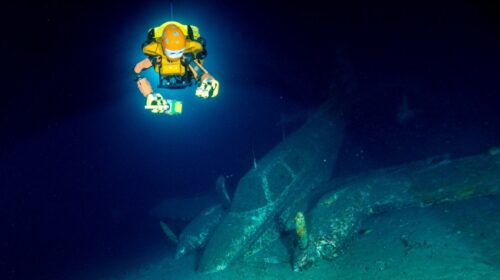Stanford University roboticists have created an underwater robot, OceanOneK, and successfully sent it on an exciting expedition!

About 500 metres below the surface of the Mediterranean, Stanford’s underwater robot OceanOneK cautiously made its way toward the top deck railing of the sunken Italian vessel Le Francesco Crispi (roughly a third of a mile). The diving robot sank approximately 1 km while exploring submerged ships, planes, and a submarine. OceanOneK’s unique characteristics give its users the impression that they are actually visiting these deep-water locations.
OceanOneK can carefully manoeuvre underwater thanks to its eight multi-directional thrusters on its thinner, back half and humanoid upper half. The haptic, or touch-based, feedback system of the robot and stereoscopic vision provided astonishingly lifelike feelings that were equivalent to what he would have felt if he had been below the surface instead of above it on the control ship.
OceanOneK’s voyage to these depths has two objectives: to explore previously unexplored territory and to demonstrate that human touch, vision, and interaction can be conveyed to locations that are far from where people can function.
To create the bot, the team did a lot of testing with various tools at the Stanford’s Avery Recreation Pool. Such preparation was advantageous in many ways, but it was particularly helpful when the team’s first voyage required them to repair OceanOneK’s amputated limb. “This required opening the robot into pieces on the deck of the boat, at night, under the wind, and during a storm,” said roboticist Oussama Khatib, who is the Weichai Professor in the School of Engineering and director of the Stanford Robotics Lab. “Our heroic students – Adrian Piedra and Wesley Guo – were working nonstop to fix the robot.”






